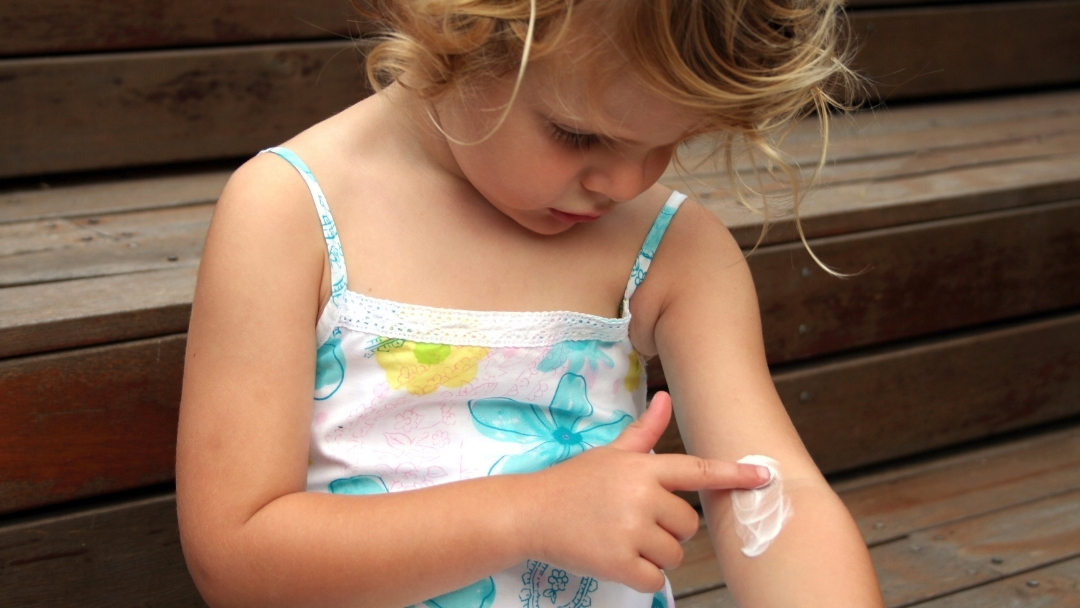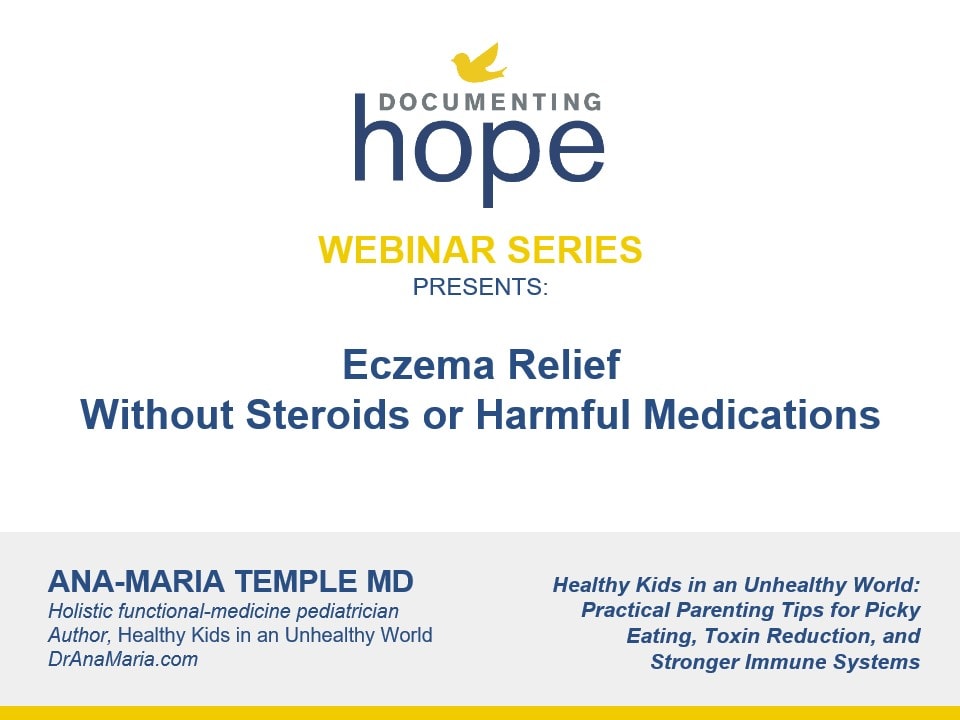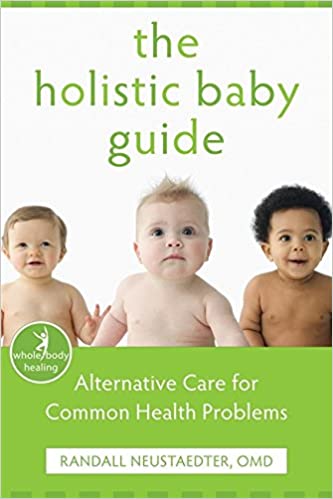What Are Eczema and Other Skin Problems?
Skin problems are very common in children and may even be evident at birth due to some exposure or infection in utero. The early infant/toddler years are a risk period for diaper-related skin problems, thrush and many skin disorders that develop due to many environmental exposures and immune related issues that young children may experience. Some common childhood skin problems may include:
- Eczema
- Diaper rash
- Seborrheic dermatitis (cradle cap)
- Chickenpox
- Measles
- Warts
- Acne
- Fifth disease
- Hives
- Ringworm
- Rashes from bacterial or fungal infections
- Rashes from allergic reactions
What Your Doctor May Tell You About Skin Problems
If your child’s skin problem is serious enough, your child’s doctor will likely tell you to see a dermatologist (specialist) who will be able to identify and treat difficult cases. In most cases, your child’s doctor will view your child’s skin problems as a skin issue in isolation to anything else going on with your body. The treatment protocol may be topical creams or lotions and may require some removal such as warts or cysts.
In more serious cases, your child’s doctor may suggest steroid (cortisone) or antibiotic creams to eliminate the problem topically. In the case of a rash developed from an allergy, your child’s doctor may tell you that you have “contact dermatitis”, which is the general name when the specifics are not understood. An antihistamine will likely be recommended.
Another Way of Thinking About Skin Problems
The Problem with Steroids
Before treating skin symptoms with a steroid (cortisone) cream or other treatments that suppress the immune system, consider doing a little detective work to identify the root cause of the symptom or symptoms. Please note that skin problems such as eczema can lead to the development of asthma if the skin problem is treated with a steroid (cortisone) cream. Steroids suppress the immune system, thus driving the disease process deeper.
Skin as an Indicator
If toxins can’t come out through the skin, the lungs may be the next organ of toxin elimination. Problems seen on the skin usually indicate one or more underlying imbalances that need to be addressed.
The skin is the body’s first line of defense. It is also a major excretory organ that your body uses to eliminate toxins. If you see skin symptoms, it is a good indicator that the body is trying to eliminate something such as a toxin (chemical or microbial).
It is also very common for heavy metal toxicity to show up on the skin. For example, arsenic contamination can result in keratosis pilaris, which shows up as yellow calluses on the feet and hands, split skin between the toes, or marks on the skin. Mercury poisoning can cause red rashes.
Viral, bacterial and fungal infections can cause various types of rashes or may show up at the end of an acute illness. If a rash is persistent or is recurrent, it could be a chronic infection such as strep, Human Herpes Virus #6 (roseola) or Lyme disease and other vector-borne illnesses such as bartonella, babesia or erlichia.
Persistent rashes are not normal and underlying causes should always be explored.
Multiple Causes
There can also be multiple causes for any given skin symptom. For example, peeling skin on the feet is often associated with a fungal infection, but it can also be a sign of a chronic strep infection, which occurs when the immune system is overburdened and dysregulated.
In order to eliminate skin problems, it is important to address toxicity, yeast overgrowth such as Candida, fungus, mold, parasites, viruses, bacteria, nutritional deficiencies and other imbalances that may be going on with the immune system.
Eczema and Other Skin Problems Healing Checklist
Still Looking for Answers?
Visit the Documenting Hope Practitioner Directory to find a practitioner near you.
Join us inside our online membership community for parents, Healing Together, where you’ll find even more healing resources, expert guidance, and a community to support you every step of your child’s healing journey.
Sources & References
da Costa Baptista, I.P., et al. Effect of the use of probiotics in the treatment of children with atopic dermatitis; a literature review. Nutr Hosp. 2013;28(1):16-26.
Drago, L., et al. Changing of fecal flora and clinical effect of L. salivarius LS01 in adults with atopic dermatitis. J Clin Gastroenterol. 2012;46 Suppl:S56-63.
Eichenfield, L.F., et al. Guidelines of care for the management of atopic dermatitis: section 1. Diagnosis and assessment of atopic dermatitis. J Am Acad Dermatol. 2014;70(2):338-51.
Gamez, C., et al. Lower Cord Blood IL-17 and IL-25, but Not Other Epithelial Cell-Derived Cytokines Are Associated with Atopic Dermatitis in Infancy. Int Arch Allergy Immunol. 2021;182(6):474-478.
Liao, T.C., et al. Comorbidity of Atopic Disorders with Autism Spectrum Disorder and Attention Deficit/Hyperactivity Disorder. J Pediatr. 2016 Apr;171:248-55.
Oh, S.Y., et al. Antioxidant nutrient intakes and corresponding biomarkers associated with the risk of atopic dermatitis in young children. Eur J Clin Nutr. 2010;64(3):245-52.
Orivuori, L., et al. High level of fecal calprotectin at age 2 months as a marker of intestinal inflammation predicts atopic dermatitis and asthma by age 6. Clin Exp Allergy. 2015.
Schmitt, J., et al. Atopic eczema and attention-deficit/hyperactivity disorder in a population-based sample of children and adolescents. JAMA. 2009 Feb 18;301(7):724-6.
Stinson, L.F., et al. Human Milk From Atopic Mothers Has Lower Levels of Short Chain Fatty Acids. Front Immunol. 2020 Jul 21:11:1427.
Resources
Books
Neustaedter, Randall. The Holistic Baby Guide: Alternative Care for Common Health Problems. New Harbinger Publications, 2010.
Temple, Ana-Maria. Healthy Kids In An Unhealthy World: Practical Parenting Tips for Picky Eating, Toxin Reduction, and Stronger Immune Systems. Integrative Health Publishing, 2021.







